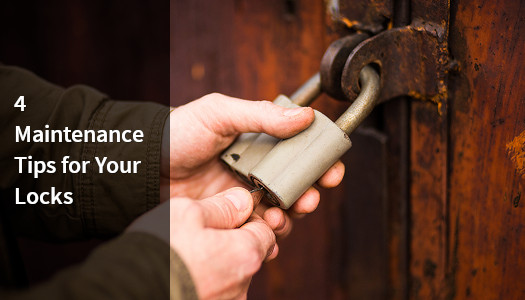Locks can be a straightforward yet highly effective method of protecting your property. Whether on a gate, door, window or container, they’re an option we recommend in many cases.
Did you know though that locks need regular maintenance? Keeping your locks maintained helps stop them sticking and maintains their resilience to the elements. Lock maintenance can also improve the life of keys, as you can turn a key with lot less pressure if the lock works well.
We’ve compiled 4 easy to use tips that you can apply to keyed locks throughout your home, business or organisation. Action these to keep your locks running well for longer.
Clean out the Dust
Dust are dirt can get into a lock. As the dust builds up, it can degrade, slow and jam the internal mechanism. A small brush, toothbrush or cloth can be used to first remove any dirt while you avoid pushing any into the keyhole. The dust can be cleaned out of the keyhole and shackle (if a padlock) by using a can of compressed air. Do not place the compressed air can straw directly within the keyhole as these cans can release moisture. Moisture inside a lock can potentially damage it overtime and require more maintenance.
Lubricate Regularly
One of the best things you can do for a lock is to lubricate it regularly with an appropriate quality lubricant. Lubrication can clear dirt from the internal components, protect them against corrosion and get your key turning easily again. Avoid using any petroleum-based lubricants as these can attract dirt and clog up your lock. Depending on the lock type, a particular lubricant could be best. Check with the manufacturer / supplier of your lock as to what lubricant they recommend. In many cases, a dry lubricant that isn’t an oil is recommended.
Many manufacturers recommend that you clean and lubricate a lock every 6 to 12 months.
If a lock is in extreme conditions, such as considerably dusty or corrosive environments, then you should increase the regularity of your lubrication routine to 3 months.
Protect Your Lock from the Environment
The constant bombardment from the elements like dust, rain and salt water can deteriorate a lock. Use a lock that is appropriate for the environment that it will live in. Corrosion-resistant locks exist on the market which can be great for marine, outdoor and dusty environments. Dust covers can be effective for some keyholes, if a cover can be fitted appropriately. If using a padlock attached to a chain, raise them off the ground so that the padlock isn’t in the dirt.
Go Easy on the Keys
Keys, like a lock, require some care and consideration too. Keys are often made with a soft metal like brass, thus they could be damaged with force or wear down over time.
If you now have to forcibly turn your key to open a lock, it most likely could be time to lubricate the lock. Many people experience a night and day difference once they properly lubricate a lock, restoring it to its original state where the key opened it easily. If you continue to forcibly turn your key, it could twist or break your key. This could be particularly annoying if part of your key breaks and gets stuck in the lock.
If even lubricating the lock, your key is still tough to turn, then it could be time to replace your key. The soft metal of keys can wear down overtime. Having spares that can be recreated can be useful to keep a reasonably original key in a good state, thus easily opening your lock when you need to.


